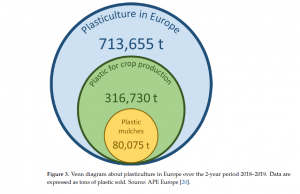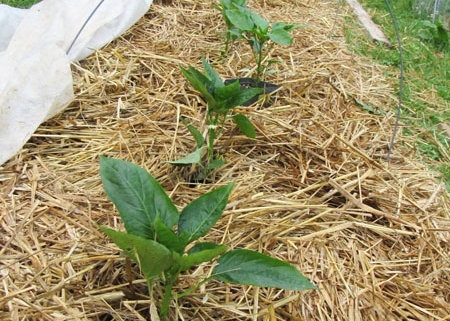Mulches and Agriculture Industry
Do you know…
The use of plastic in agriculture increased considerably over the years, so much so that the word “plasticulture” was coined as a blend of the words “plastic” and “agriculture”.
This concept is still very widespread in Europe, so that 713655 tons of plastic sold in the two-year period 2018–2019, was related to plasticulture like plastic mulches which accounted for 25.3% of the plastic sold for crop production and for 11.2% of the total plasticulture (the following graph).

Mulches can be defined as materials that are applied on the soil surface due to their benefits e.g., improvement of moisture content, reduction in soil compaction and erosion, temperature adjustment and improvement to plant establishment and growth.
In addition to plastic mulches, there are organic mulches (products of vegetable or animal origin) and special mulches (e.g., gravel). Organic mulches can reduce the use of plastic and its harmful effects on environment and healthy, improve soil nutrition, degrade pesticides, and reduce weed pressure. These three groups of mulches can be used in combination, based on the specific aims.
Ref: Abbate, C., Scavo, A., Pesce, G.R., Fontanazza, S., Restuccia, A. and Mauromicale, G., 2023. Soil Bioplastic Mulches for Agroecosystem Sustainability: A Comprehensive Review. Agriculture, 13(1), p.197.
This post is also available in: Persian




Leave a Reply
Want to join the discussion?Feel free to contribute!